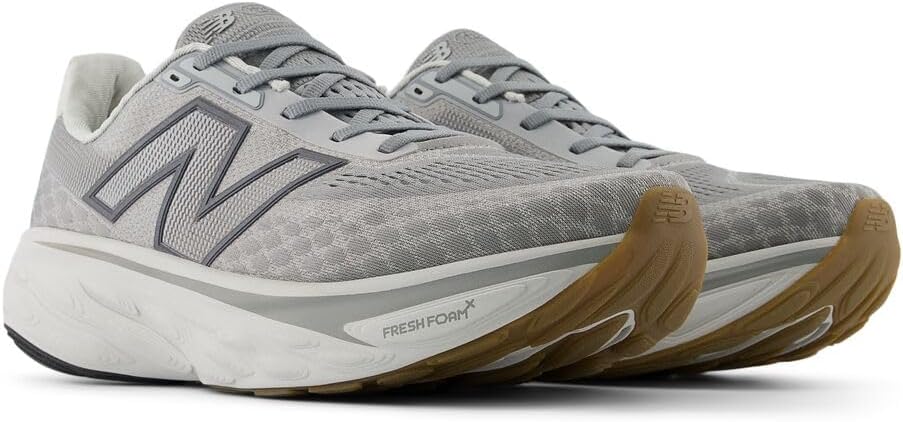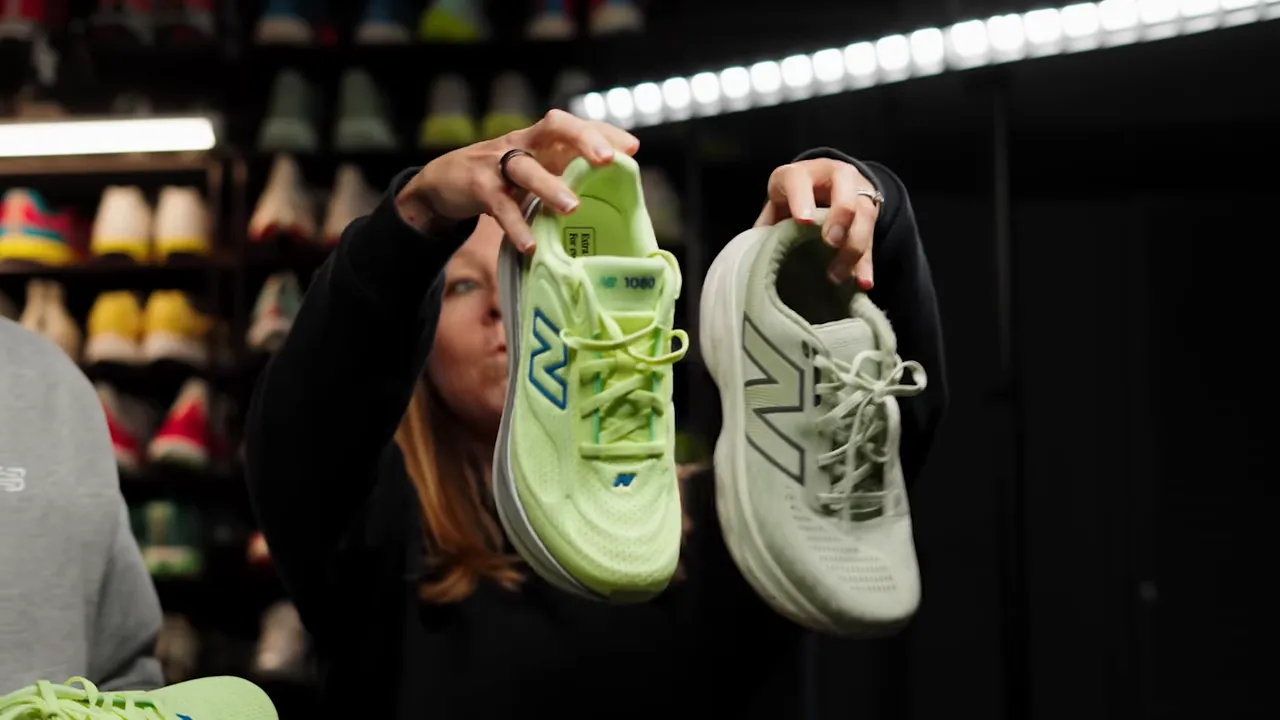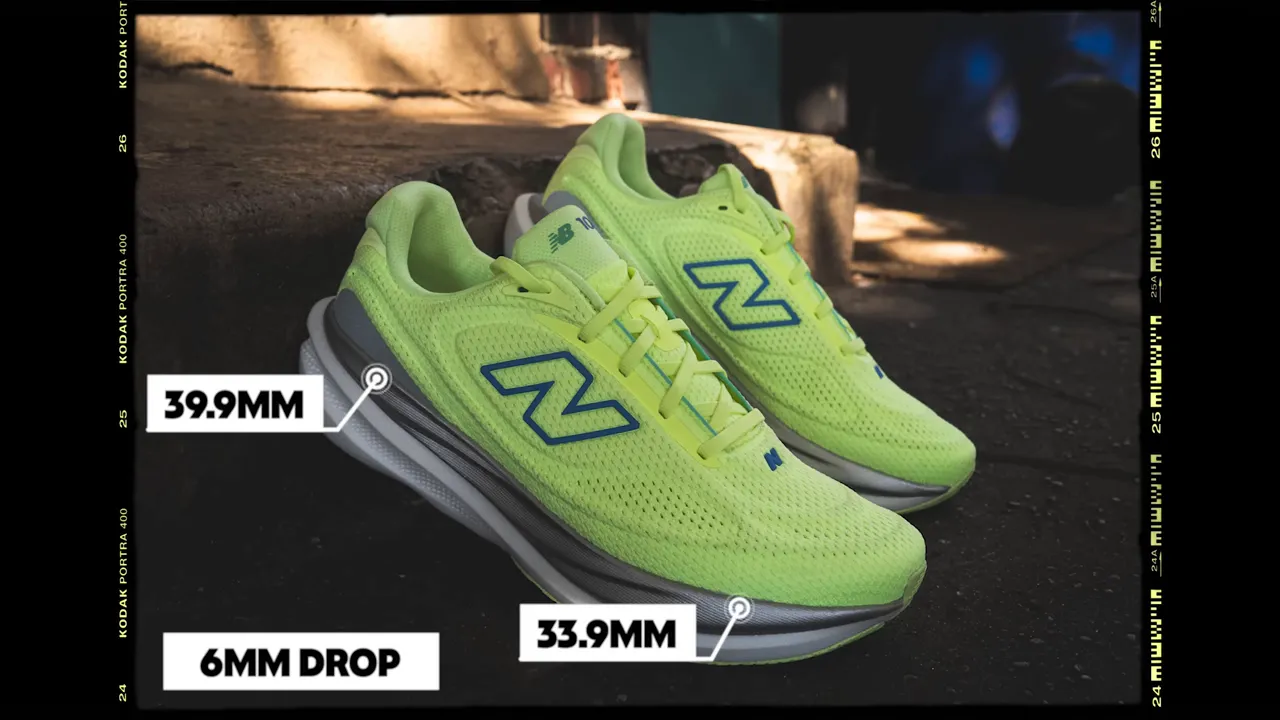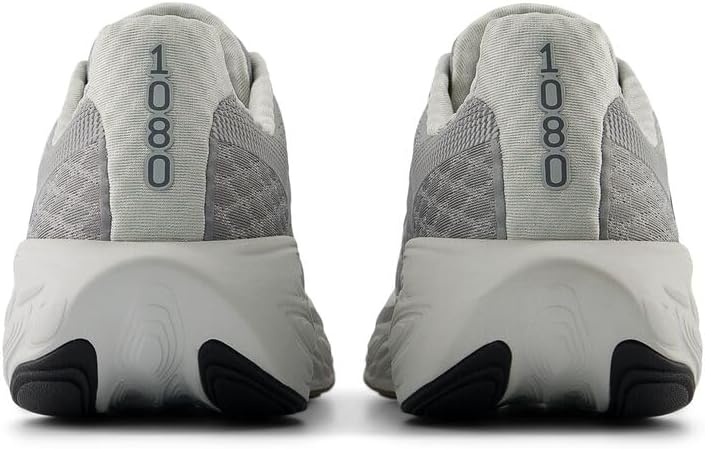REVIEW PROTOCOL: ACTIVE
ID: REF-2025-48BCEConclusions built strictly upon verifiable data and validated research.
Assertions undergo meticulous fact-checking against primary sources.
Delivering clear, impartial, and practical insights for application.
The New Balance 1080 v15 marks one of the biggest updates this long‑running line has seen in years. The familiar Fresh Foam midsole is gone, replaced by a brand‑new cushioning compound and a reworked upper that fits and rides differently from the v14.
I put meaningful miles into the 1080 v15, including long runs up to 16 miles and a direct A/B test with the 1080 v14. This review breaks down how it fits, how it feels on the run, how durable it seems, and who will (and won’t) love this shoe.
New Balance Mens Fresh Foam X 1080 V14

- Maximum Fresh Foam X cushioning
- Smooth transitions, premium comfort
- Breathable mesh upper
- Customizable fit with adjustable laces
Key Specs at a Glance
All specs below are taken from the original test pair.
- Category: Premium daily trainer
- Price: $170
- Stack height: ~40 mm heel / ~34 mm forefoot (6 mm drop)
- Weight:
- Women’s US 7.5: ~7.3 oz / 208 g
- Men’s sample: ~9.6 oz / 273 g
- Midsole: New Infinien-style foam (Fresh Foam replacement)
- Upper: Soft engineered mesh, gusseted tongue, plush heel collar
- Outsole: Rubber coverage in key zones with exposed midsole foam
If you’re comparing options, it sits in the same space as other premium cushioned daily trainers in our broader guide to the best running shoes.
What the 1080 v15 Is Designed For
New Balance positions the 1080 v15 as its top-tier cushioned daily trainer. It’s built to:
- Handle high weekly mileage comfortably
- Feel soft enough for recovery runs
- Stay lively enough for steadier tempo efforts and long runs
If you’re a newer runner looking for a single do‑it‑all shoe, it can cover most of what you need, much like the models we highlight in our breakdown of the best running shoes for beginners.

Upper & Fit: Comfortable, But Narrower Than the v14
The upper is a complete redesign from the v14.
What’s Changed
- Material: Softer, more premium-feeling mesh with more stretch
- Tongue: Gusseted and lightly padded, which helps lockdown without hot spots
- Collar: Plush padding around the heel for a secure, comfortable hold
On foot, it feels immediately comfortable and secure, especially through the midfoot and heel.
Fit Profile
Here’s where existing 1080 fans need to pay attention:
- The v15 is narrower through the midfoot and feels a bit straighter in the toe box than the v14.
- Overall volume feels reduced, especially across the forefoot.
- The upper does stretch slightly after a few runs, but the basic shape stays snug.
If you loved the wide, roomy toe box of past 1080s, this will feel like a different shoe. Runners who struggle with bunions, wide forefeet, or splayy toes may want to read up on how running shoes should fit before committing.
Visually, the shoe has a somewhat “tubular” look on foot—clean and smooth, but less sculpted and dramatic than some racer‑inspired trainers. That’s purely aesthetic, but if you care how your shoes look, it’s worth noting.

Midsole & Ride: A New Foam With More Life
The headliner is the switch from Fresh Foam to New Balance’s new Infinien-style midsole compound.
How It Feels
On the run, the foam delivers a balanced mix of cushioning and bounce:
- Soft enough to protect your legs on longer runs
- Springy enough to avoid feeling mushy or dead
- Not a “super shoe” explosive pop, but noticeably lively for a daily trainer
In a 16‑mile long run, the foam never felt like it was bottoming out or turning flat. It kept the ride consistent and comfortable throughout.
Side‑by‑Side With the 1080 v14
To really feel the difference, I ran an 8‑mile session with the 1080 v14 on one foot and the v15 on the other:
- The v15 felt slightly bouncier and more responsive
- The difference wasn’t dramatic on day one, but
- The new foam clearly aims at better long-term resilience than Fresh Foam
That last point matters. If you’re a high‑mileage runner, or you’ve had shoes lose their “pop” too quickly in the past, this new foam should keep its life longer.
If you’re unsure how to match foams, stack heights, and support features to your needs, our guide on how to choose the right running shoes walks through the decision process step‑by‑step.
Weight, Stack & Underfoot Feel
With a ~40 mm heel / 34 mm forefoot stack and 6 mm drop, the 1080 v15 delivers substantial cushioning without feeling unstable.
- The ride is cushioned but not wobbly—you still feel reasonably connected to the ground.
- New Balance also managed to trim weight versus the v14, with about an ounce saved in comparable sizes.
For a premium daily trainer with this much foam, the weight feels very respectable, especially if you’ve tried heavier max‑cushion shoes and found them clunky.
Outsole & Traction
The outsole uses a sensible, no‑nonsense layout:
- Sticky rubber in the forefoot for grip on roads
- Tougher rubber compound at the heel for durability
- Exposed midsole foam in some sections to save weight
On typical road surfaces (dry pavement, light debris), traction is absolutely fine. Over time, you’ll see scuffing on the exposed foam, but in testing this has been more cosmetic than functional—the cushioning performance remains consistent.
If you frequently deal with foot aches or hot spots, pairing a durable outsole like this with a well‑fitting upper and appropriate insole can also help with issues like those covered in our guide to common foot problems for runners.

Durability & Expected Lifespan
Based on:
- The density and feel of the new midsole foam
- The rubber coverage pattern
- How the shoe felt after longer runs and multi‑week use
…it’s reasonable to expect around 400–500 miles for many runners, assuming average body weight, neutral mechanics, and mostly road usage.
The key advantage here is foam resilience: it feels designed to retain its bounce deeper into the shoe’s life than many softer foams, which can feel “done” long before the outsole actually wears out.
If your goal is to maximize comfort and longevity, and you don’t mind a bit of plushness, you may also want to compare this model with our picks for the most comfortable running shoes.
Fit & Sizing Tips
From testing and comparison with the v14:
- Length: The 1080 v15 runs slightly long.
- Width: It’s narrower in the midfoot and forefoot than older 1080s.
- Volume: Lower volume especially in the toe box, with a snugger overall feel.
Practical advice:
- If you’re between sizes and have a standard or narrow foot, you can likely stay in your usual running shoe size.
- If you have a wider forefoot or rely on a generous toe box, strongly consider trying them on in person—or look at models designed for more width, such as those featured in our roundup of the best running shoes for wide feet.
For a deeper dive into dialing in length, width, and lacing adjustments, see how running shoes should fit.
How It Compares to the 1080 v14 and Other Options
Versus the 1080 v14
What’s better in the v15:
- Livelier, more resilient midsole foam
- Slightly lighter weight
- More refined, premium‑feeling upper materials
What some runners will miss:
- The roomier toe box and overall higher volume of the v14
- A more traditional “wide New Balance” feel
If you were in love with the v14 specifically for its forefoot space, the v15 is a different animal, not just a simple tweak.
Versus Other Daily Trainers
The 1080 v15 sits squarely in the “luxury daily trainer” slot:
- More plush and cushioned than traditional neutral trainers
- Not as aggressive or propulsive as plated tempo/race shoes
- A smart choice as a single workhorse for runners who want protection first, performance second
If you’re just starting your running journey and want a durable, protective workhorse to pair with an introductory plan like our smart guide to starting running from scratch, the 1080 v15 fits that bill nicely.
For a broader comparison across brands and categories, see our full guide to the best running shoes.
Pros & Cons
Pros
- Lively, long‑lasting midsole that resists bottoming out
- Plush, comfortable upper with a secure heel and midfoot hold
- Respectable weight for the amount of cushioning
- Durable outsole that should match the life of the foam
Cons
- Narrower, lower‑volume fit than earlier 1080s—problematic for wider feet
- Some colorways have metallic midsole paint that can look cheaper than the materials actually are
- Aesthetic is clean but relatively un-sculpted, if you prefer a racier look
If you know width and forefoot comfort are priority #1 for you, our curated list of the best running shoes for wide feet may be a better starting point.
Who Should (and Shouldn’t) Buy the New Balance 1080 v15
You Should Consider the 1080 v15 If:
- You want one premium daily trainer for most of your weekly miles
- You value cushioning and long‑term durability over having a hyper‑aggressive “race feel”
- You prefer a snug, secure midfoot fit with a moderately padded upper
- You’re logging substantial mileage and want foam that stays lively for months
You May Want to Skip It If:
- You relied on the roomy toe box of earlier 1080 versions
- You have significantly wide feet or prominent bunions
- You prioritize a sculpted, race‑shoe look over a more understated design
- You want maximum support or stability features (this is a neutral trainer)
In that case, exploring more traditional high-cushion models or consulting resources like our guide on how to choose the right running shoes is a good next step.
My Performance Rating (Out of 15)
Using the original scoring framework:
- Form (build & aesthetics): 3 / 5
High‑quality materials, but the visual design and some metallic colorways may not appeal to everyone. - Fit (comfort & lockdown): 3 / 5
Very comfortable once broken in, but the narrowed toe box and slightly long fit mean not everyone will get a perfect match out of the box. - Function (ride & purpose): 4 / 5
Does its job as a premium daily trainer very well: cushioned, lively, and durable.
Total: 10 / 15 – A solid, dependable daily trainer with a standout midsole for runners whose feet match the new last shape.
Quick FAQs
What is the New Balance 1080 v15 best for?
High‑mileage daily training, long runs, and cushioned recovery days, with enough responsiveness for moderate tempo segments.
How does the new foam compare to Fresh Foam?
It feels a bit more energetic and appears designed to retain its springiness longer, even if the difference is subtle on day one.
Does it run true to size?
Length is slightly long and the fit is on the narrower side, especially compared with past 1080s. Try before you buy if you have wide feet or loved the old roomy toe box.
Is the outsole grippy and durable?
Yes—forefoot grip is solid and heel rubber is tough. Exposed foam will scuff, but that’s mostly cosmetic and doesn’t noticeably affect performance.
Bottom line:
The New Balance 1080 v15 is a thoughtfully updated premium daily trainer with a midsole that stands out for its durability and balanced ride. If your foot shape matches the new, slightly narrower last and you want cushioning that stays lively for hundreds of miles, it’s absolutely worth a test run. If you need more space up front, start your search with roomier options in our coverage of the best running shoes for wide feet and best running shoes for beginners.
New Balance Mens Fresh Foam X 1080 V14

- Maximum Fresh Foam X cushioning
- Smooth transitions, premium comfort
- Breathable mesh upper
- Customizable fit with adjustable laces
References
- REI Co‑op – How to Choose Road Running Shoes
Practical, step‑by‑step guide to understanding cushioning, support, and fit, with visuals and checklists.
👉 https://www.rei.com/learn/expert-advice/running-shoes.html - Runner’s World – Running Shoe Gear & Reviews Hub
Regularly updated reviews, buyer’s guides, and shoe‑selection tips across all brands and distances.
👉 https://www.runnersworld.com/gear/a20863441/running-shoes/ - Doctors of Running – In‑Depth Running Shoe Reviews & Biomechanics
Physical therapists break down shoes with a focus on gait, injury risk, and who each model is best for.
👉 https://www.doctorsofrunning.com/ - RunRepeat – Data‑Driven Running Shoe Comparisons
Large database of shoes with aggregated expert/user reviews, filters by weight, stack height, drop, and more.
👉 https://runrepeat.com/catalog/running-shoes - American Academy of Orthopaedic Surgeons – Selecting Athletic Shoes
Medical guidance on choosing footwear to reduce injury risk, including fit checks and wear‑pattern tips.
👉 https://orthoinfo.aaos.org/en/staying-healthy/selecting-athletic-shoes/ - Mayo Clinic – Tips for Choosing the Right Walking/Running Shoes
Simple medical perspective on support, cushioning, and when to replace worn‑out shoes.
👉 https://www.mayoclinic.org/healthy-lifestyle/fitness/in-depth/walking/art-20050972 - New Balance – Official Running Footwear Collection
Current lineup of New Balance running shoes, including tech overviews and spec filters.
👉 https://www.newbalance.com/running/ - American Podiatric Medical Association – Footwear & Foot Health Resources
Educational articles on foot mechanics, common running injuries, and shoe‑related foot care.
👉 https://www.apma.org/patients/
Alexios Papaioannou
Empirical Foundation
Every conclusion is built upon a foundation of verifiable data and validated research.
Commitment to Veracity
Each assertion undergoes a meticulous fact-checking process against primary sources.
Actionable Intelligence
Our sole objective is to deliver clear, impartial, and practical insights for our readers.
Founder of GearUpToFit.com and fitness technology expert with 10+ years of experience reviewing sports wearables and GPS watches. Has personally tested over 200 fitness devices and published 1000+ evidence-based articles on fitness technology.